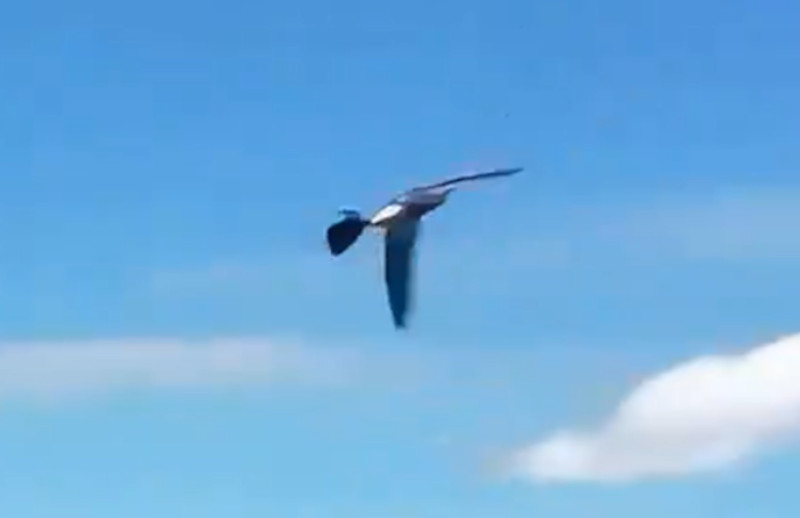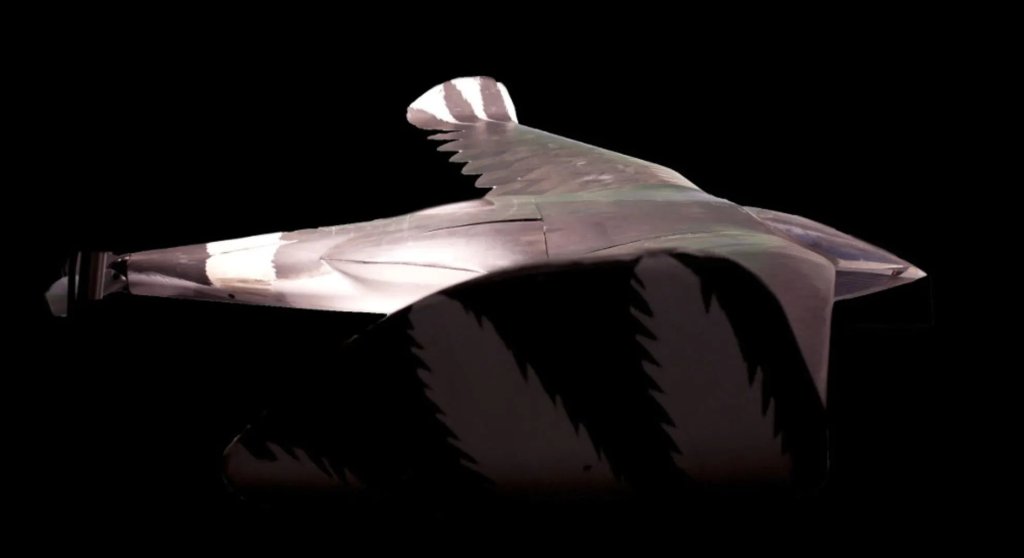Members of China’s Jiaolong Commandos, a maritime special operations units, are seen using multiple types of bird-like drones in newly emerged videos. The scenes may look ripped straight from a Hollywood action thriller or a new Call of Duty installment, but the idea of drones that mimic birds is not new in China or elsewhere around the world. Coupled with advances in miniaturized sensors and other new developments, biomimetic uncrewed aerial systems (UAS) could have real operational benefits, including being able to surveil enemy forces or execute kamikaze attacks, and do so with less of a chance of being detected.
The video clips showing the Jiaolong Commandos employing the bird drones first began to circulate widely on social media in the past day or so. One clip shows a member of the unit in the water in what looks to be a municipal park launching a bird drone that is somewhere between the size of a pigeon and a sparrow. In another clip, one of the commandos is seen employing a larger type closer in size to something like a raven or a hawk.
These and other clips that appeared online also show Jiaolong Commandos employing a more traditional-looking hand-launched quadcopter kamikaze drone and riding on powered skateboards and boogie boards.
The Jiaolong Commandos, the name of which translates to “Sea Dragon” in English, are part of the People’s Liberation Army Marine Corps (PLANMC), itself a component of the PLA Navy (PLAN). The unit, which is a very rough equivalent to the U.S. Navy SEALs, helped hundreds of Chinese and other foreign nationals evacuate from Yemen’s port city of Aden in 2015 and recaptured a commercial ship that had been taken over by pirates in the Gulf of Aden two years later. The exploits of the Sea Dragons in Aden were subsequently dramatized in a feature film called Operation Red Sea.

As a maritime special operations unit, the real-world Jiaolong Commandos are understood to be tasked with conducting operations at sea, such as boarding ships, as well as combat diving missions. As evidenced by the deployment to Aden, the Sea Dragons are also trained to perform various missions on land, which could include direct action raids and long-range reconnaissance.
Drones that look like birds could be valuable in many of these operational contexts as a way to surveil hostile forces or just gain better situational awareness discretely. Knowing the capabilities of existing nano drones like the pocket-sized Black Hornet from U.S.-headquartered FLIR Systems, both of the bird-like designs are big enough to potentially carry one or more day and/or night-capable full-motion video cameras and links to send those feeds back to a hand-held controller, providing localized surveillance and reconnaissance capabilities.
The Chinese bird drones could carry other payloads, including micro-warheads. A kamikaze configuration with even just a very small sized explosive charge could still offer useful effects against individuals, especially behind cover.
The biomimetic drones have the added benefit of looking broadly like birds, which could make them particularly difficult to spot and classify as a threat. The smaller of the two biomimetic drones seen in the newly emerged clips of the Jiaolong Commandos looks like it could be particularly hard to discern from a real bird with just a casual glance.

Small and highly maneuverable drones that look like drones already present significant challenges when it comes to detection and discrimination, let alone trying to bring them down. The war in Ukraine, where first-person view (FPV) kamikaze drones and other lower-end weaponized types have become an absolute scourge on both sides of the battlefield, has helped ram home how real these threats are now and how they are likely to grow in the future.
As already noted, the idea of using bird-like drones (as well as actual birds carrying cameras) to discretely carry out surveillance and conduct other missions is not new. The U.S. Central Intelligence Agency’s (CIA) Cold War-era Project Aquiline is a prime of how far back these projects go. You can read more about the Aquiline, which dates back to activities at Area 51 in the late 1960s, in this past War Zone feature.

The U.S. military and Intelligence Community is known to have at least explored biomimetic drones since then and examples recovered in Iraq and Pakistan at the height of the Global War on Terror (GWOT) era strongly point to the operational use, at least on a limited level of such capabilities.
The new video of the Jiaolong Commandos is hardly the first time bird-like UASs have been observed in development in China, potentially for military use. In 2022, a team from the country’s Northwestern Polytechnical University notably set a Guinness World Record for the longest flight duration of an unmanned ornithopter using a single battery charge using a bird-like drone design that remained aloft for 2 hours, 34 minutes, and 38 seconds. An ornithopter is defined as an aircraft that flies by flapping wings. That same team has since claimed to have broken that record again with a three-hour, five-minute, and 30-second-long flight.

There continues to be broader interest in other kinds of biomimetic uncrewed capabilities for use on land and at sea, above and below the waves, in the United States, China, and elsewhere, as well. For instance, at the annual Modern Day Marine conference this past May, a U.S. Marine Corps officer highlighted that his service was looking into a “terrestrial snake” drone as a potential battlefield tool.
“Ten years ago, if you told me there was a robotic snake that we’d be looking into for warfighting functions I would’ve not believed you,” Lt. Col. Keenan Chirhart, the senior UAS capabilities integration officer at the service’s Combat Development and Integration Command (CD&I), during his briefing at Modern Day Marine.
All this being said, how actively China’s Jiaolong Commandos may now be fielding either type of bird drone, or any of the other capabilities seen in the recently emerged videos, is unknown. Still, despite looking like something that belongs in a blockbuster action movie or videogame, biomimetic drones continue to have real potential military applications.
Contact the author: joe@twz.com
